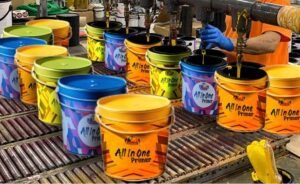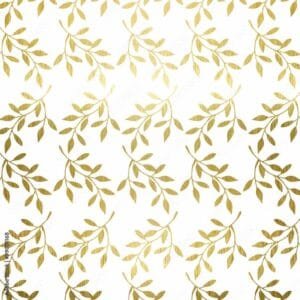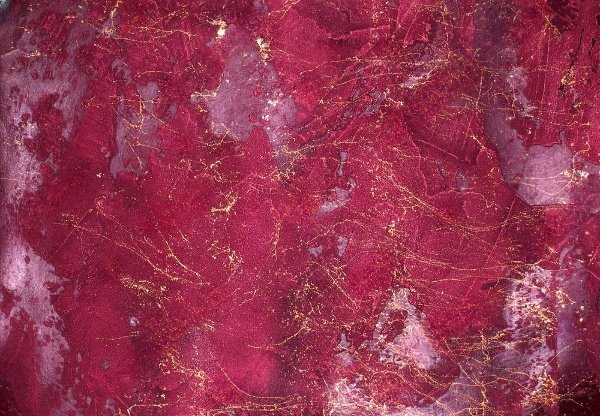Introduction to the Marble Effect
The marble effect is a captivating artistic technique that replicates the intricate veins and patterns found in natural marble. This method is characterized by the mesmerizing swirls of color and texture, creating a sense of depth and movement. The aesthetic appeal of the marble effect lies in its ability to evoke the grandeur and elegance associated with marble as a material, often employed in architecture and sculpture. In the realm of art and design, the marble effect has transcended traditional boundaries, finding its application in various mediums including paintings, textiles, and decorative objects.
Mithila painting, a traditional art form originating from the Mithila region of India, employs the marble effect to enhance its visual richness. Artists use vibrant colors and intricate designs that resemble the fluidity of marble patterns, making each piece unique. The swirling color combinations not only replicate the natural beauty of marble but also symbolize the interconnectedness of nature and culture. This distinctive style has gained popularity in contemporary art, bridging ancient techniques with modern artistic expressions.
Moreover, the incorporation of the marble effect in Mithila painting serves not only an aesthetic purpose but also a cultural one. Such designs often capture local flora, fauna, and mythology, making the artworks both visually striking and meaningful. The texture and movement created by the marble effect draw the viewer’s eye, inviting them into the rich tapestry of stories and traditions embedded within each piece. As interest in sustainable and handcrafted art continues to grow, the marble effect in Mithila painting stands out as a fascinating glimpse into the art of transforming the ordinary into the extraordinary.
Understanding Mithila Paints
Mithila paints, commonly referred to as Madhubani art, originate from the Mithila region of Bihar, India. This ancient art form has a rich historical significance, deeply embedded in the cultural tapestry of the region. Historically, Mithila paintings were created by women in the villages of Mithila, primarily as a form of expression during religious and cultural occasions, such as weddings and festivals. Over time, this artistic practice has evolved, yet it has retained its traditional roots, making it distinct from other forms of Indian art.
At the heart of Mithila paintings are the traditional techniques used by artisans, which are integral to their authenticity and uniqueness. Artisans typically employ natural pigments derived from plants, minerals, and other organic materials, which contribute to the vibrant and earthy colors characteristic of these artworks. These pigments not only embody the local landscape but also reflect a sustainable approach to art-making, aligning with ecological principles. The colors used are rich and varied, ranging from deep reds and verdant greens to bright yellows, all of which are mixed with binding agents to form paints that adhere well to surfaces.
Mithila paints are distinguished by their intricate patterns and motifs, often depicting themes from nature, mythology, and daily life. Geometric shapes, floral designs, and figures illustrating tales from Hindu epics are common elements found in this art form. The meticulous detailing and vibrant colors work in harmony to create a visually striking narrative that captivates admirers. Furthermore, Mithila paintings have undergone a transformation over the years, expanding from the walls of homes to canvases, textiles, and various decorative items, increasing their popularity both nationally and internationally. This evolution showcases not only the adaptability of Mithila art but also the enduring legacy of the artisans committed to preserving this culturally significant practice.

Materials Used in Creating the Marble Effect
The creation of the exquisite marble effect in Mithila painting necessitates a variety of carefully selected raw materials that embody the tradition and craftsmanship of this art form. Central to this technique are the paints themselves, predominantly derived from natural sources. Traditionally, artists have utilized vegetable dyes, minerals, and other organic materials to create vibrant colors that not only reflect the cultural landscape of Mithila but also enhance the overall visual experience.
For instance, the use of pigments such as indigo, turmeric, and the rich red derived from lac plays a crucial role in maintaining the authenticity of the art. These natural colors not only provide depth to the paintings but also align with the sustainable practices that are deeply rooted in Mithila art. The marble effect, often characterized by its intricate swirls and patterns, is best achieved using finely ground colors that allow for smooth blending and layering.
Equally important are the brushes employed in the painting process. Mithila artists typically craft their brushes from locally sourced materials, such as animal hair or bamboo. The choice of brush significantly influences the texture and precision of the marble effect. A fine, supple brush allows for delicate strokes that are essential in creating the soft, flowing patterns reminiscent of marble. The artist’s skill combined with the right brush can transform the surface into a stunning representation of this natural phenomenon.
Furthermore, the choice of surface on which the artwork is created is paramount. Traditionally, Mithila paintings are executed on handmade paper, walls, or cloth, all of which provide a unique absorbency and texture that impact the final piece. The combination of these materials allows artists to skillfully replicate the marble effect, ensuring that the final artwork not only resonates with cultural significance but also captivates viewers with its beauty.
Step-by-Step Guide to Creating the Marble Effect
Creating the marble effect using Mithila paints is an intriguing process that combines artistic flair with meticulous technique. The first step begins with preparation, which includes gathering all necessary materials. You will need Mithila paints, a mixing palette, brushes of various sizes, and a suitable canvas or paper. A stable workspace is essential to handle the various stages of the painting process without interruptions.
Once your workspace is organized, the second step is to prepare your paints. Mithila paints are traditionally derived from natural pigments, and they should be mixed with a medium that allows for fluid application. Pour a small amount of each color onto your mixing palette, ensuring that the hues are vibrant and well-blended to provide a good foundation for the marble effect.
The third step involves applying a base coat. Choose a neutral base color to cover the canvas or paper. This base will serve as the backdrop for your marble effect and should dry completely before proceeding. It is advisable to use a wide brush for even coverage. After the base coat has dried, you can start on the actual marble effect.
To achieve the signature swirls of the marble design, begin by applying small amounts of your chosen colors onto the canvas. Using a fine brush, gently drag the colors across the surface in circular motions. Be sure to overlap colors to create fluid transitions. The blending of these colors is crucial, so patience is key; work gradually and limit the number of strokes to maintain the integrity of the swirling patterns.
Finally, after achieving the desired patterns, allow the artwork to dry thoroughly. Once dried, you might consider adding a protective sealant to enhance durability and polish the appearance of your Mithila marble effect. With practice, this process can yield stunning results, whether you’re a beginner or an experienced artist.

The Role of Techniques in Enhancing the Marble Effect
The marble effect in Mithila painting is an intricate artistic expression that requires a deep understanding of various techniques employed by artists. One of the primary methods used to achieve depth and dimension is the layering of colors. Traditionally, artists would apply multiple layers of water-based dyes, allowing each layer to dry before adding the next. This gradual buildup not only contributes to the richness of color but also creates a textured appearance that mimics the veins of marble.
In addition to layering, brush strokes play a crucial role in enhancing the marble effect. Artists often employ fine, meticulous brushwork that adds intricate details to the composition. Different brushes can be used to create varying degrees of thickness and texture, allowing for a versatile approach. For instance, a flat brush might be used for broad strokes, while a round brush can create detailed lines reminiscent of the delicate veins found in natural marble. This combination of techniques showcases the skill and precision of the artist, elevating the work from mere decoration to a sophisticated art form.
Contemporary practices have also introduced innovative techniques into Mithila painting, allowing artists to explore new methods to achieve the marble effect. Some artists experiment with the use of sponges or cloth to dab colors, generating a marbled appearance that merges traditional and modern elements. Digital technologies have emerged as a tool for some, enabling artists to visualize and refine their work more efficiently. These contemporary approaches demonstrate the evolving nature of Mithila art while respecting its rich heritage.
Ultimately, the mastery of these various techniques is essential for any artist aiming to replicate the marble effect successfully. This harmonious blend of traditional and contemporary practices ensures that Mithila painting continues to thrive as a vibrant and evolving art form.
Challenges in Marble Effect Manufacturing
The process of creating a marble effect using Mithila paints presents several unique challenges that artists must navigate. One of the most significant issues encountered is color bleeding, which occurs when one color merges into another unintentionally. This phenomenon can arise due to the liquid nature of the paints, requiring artists to exercise caution in their application. To mitigate this, practitioners can employ a technique of layering, allowing each coat of paint to dry thoroughly before applying the next. Additionally, using a higher viscosity medium may help maintain distinct color boundaries.
Consistency in patterns is another hurdle faced during the manufacturing of the marble effect. Achieving a uniform look across multiple pieces can prove difficult, as the intricate nature of Mithila painting demands precision. Artists may struggle with varying brush pressure or the application technique, leading to discrepancies in appearance. To combat this issue, artists can create practice swatches or templates. This practice allows them to refine their technique and establish a clearer understanding of how to manipulate the paints effectively for a harmonious outcome.
Furthermore, attaining the desired finish can be challenging, especially for those new to this style. The marble effect relies heavily on the interplay of colors and textures, and achieving the right level of gloss or matte finish may be tricky. Artists should experiment with different types of sealants or finishing agents that complement Mithila paints, as these can significantly alter the final appearance. Careful selection of tools—like brushes or sponges—also plays a crucial role in producing the desired texture. By addressing these challenges, artists can elevate their work and successfully create stunning marble effects that capture the rich tradition of Mithila painting.

The Importance of Cultural Context
The creation of the marble effect in Mithila painting cannot be fully appreciated without understanding the intricate cultural context in which this art form exists. Mithila, a region in Bihar, India, is steeped in a rich tapestry of stories, rituals, and traditions that have significantly shaped the aesthetic and thematic choices of its artists. These elements serve as a canvas on which the community’s identity is painted, interweaving the past with the present through intricate patterns and vibrant colors.
The stories depicted in Mithila art often draw from local mythology, folklore, and daily life, integrating narratives that resonate with the community’s spiritual and cultural heritage. For instance, many artists focus on themes of fertility, nature, and deities, reflecting the region’s agrarian society and its reverence for the agricultural cycle. The marble effect, characterized by swirling colors and fluid shapes, is not merely a stylistic technique; it embodies these local stories and the collective consciousness of the Mithila people.
Additionally, the rituals intrinsic to the Mithila culture play a crucial role in the artistic process. Festivals, marriage ceremonies, and religious events often feature Mithila paintings as central components, consequently influencing the designs and themes utilized by artists. The incorporation of traditional symbols into the marble effect also underscores the cultural significance of these practices, allowing artists to convey deeper meanings within the vibrant patterns.
This blend of tradition and innovation not only enriches the visual appeal of Mithila paintings but also ensures that each piece serves as a narrative of cultural identity and continuity. As such, understanding the importance of cultural context is essential to appreciate the craftsmanship behind the marble effect in Mithila painting and its enduring legacy in Indian art.

Contemporary Applications of the Marble Effect in Mithila Art
The marble effect, traditionally employed in Mithila painting, has evolved to find its place in various contemporary applications, demonstrating the adaptability of this ancient art form. Artists now explore the marble effect beyond the confines of traditional canvases, incorporating it into home decors, fashion, and modern art installations. This approach not only preserves the essence of Mithila art but also appeals to a broader audience that seeks unique and culturally rich decors and fashion statements.
In home decors, the marble effect enhances the visual appeal of various items such as wall hangings, cushion covers, and ceramic products. By integrating vibrant colors and intricate designs inherent in Mithila art, artisans have successfully transformed everyday objects into stunning focal points. These decorative items resonate with homeowners who appreciate the rich cultural heritage and look for ways to showcase traditional crafts in contemporary living spaces. This fusion provides a tactile and visually stimulating experience, making it a popular choice in urban settings.
The fashion industry has also embraced the marble effect, where designers incorporate Mithila-inspired prints and patterns into modern apparel and accessories. By utilizing the striking aesthetics of the marble effect, clothing and textile designers create garments that celebrate cultural roots while ensuring they suit contemporary tastes. This approach not only revitalizes interest in Mithila art but also gives artists a platform to innovate their traditional techniques to meet current trends.
Moreover, the marble effect has extended its reach into modern art forms, with contemporary artists experimenting with Mithila motifs in installations and mixed media works. This adaptation provides a narrative that speaks to both heritage and modernity. By leveraging traditional craftsmanship in innovative ways, artists ensure that Mithila art remains relevant and continuously evolves, thereby attracting new audiences intrigued by the interplay of tradition and contemporary expression.

Conclusion and Future of Marble Effect in Mithila Paints
The marble effect in Mithila paints stands as a testament to the rich heritage and cultural significance of this traditional Indian art form. Throughout this blog post, we have explored the intricate techniques involved in creating the marble effect, the materials utilized, and its enduring allure among both artists and art enthusiasts. The mesmerizing patterns and color combinations emblematic of the marble effect not only enhance the aesthetic appeal of Mithila artworks but also serve as a bridge connecting ancient traditions with contemporary interpretations.
As we look to the future, it is essential to recognize the potential for innovation within this art form. Artists are beginning to experiment with new mediums and technologies, enabling them to enhance the traditional methods of depicting the marble effect. The integration of digital tools for design and the use of unconventional materials holds promise for expanding the boundaries of Mithila paintings while still honoring traditional practices. Furthermore, the growing interest in sustainable art practices may influence the materials and techniques used by artists striving to create a more eco-friendly approach to their work.
The marble effect’s popularity, particularly as a decorative element in contemporary interior design, indicates a promising future for Mithila painters. As awareness of this unique art form grows, opportunities for collaboration with designers and brands can emerge, potentially leading to new markets and platforms for marketing Mithila artworks.
In summary, the marble effect in Mithila paints is not merely a visual delight; it encapsulates the cultural richness, adaptability, and enduring charm of this traditional art. By continuing to support and explore this vibrant medium, we can ensure that the essence of Mithila painting evolves while maintaining its rich legacy for future generations to appreciate and cherish.

